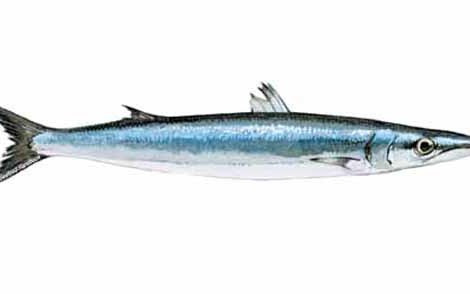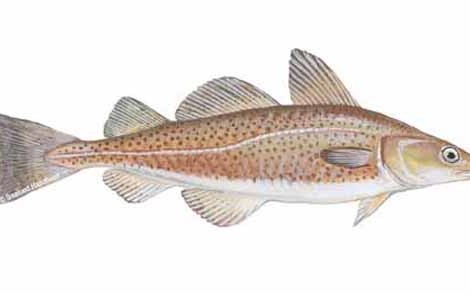Seafood Handbook Finfish Page
The Seafood Handbook is the most comprehensive seafood directory available online. Featuring more than 100 of the most common seafood species in the U.S. market, the Seafood Handbook is the ultimate guide to seafood sourcing and preparation, brought to you by the editors of SeaFood Business magazine. And it’s free!
For each type of seafood species, there is a comprehensive overview of the item, its origin, history, availability, product attributes, nutritional value and cooking tips, along with an original hand-drawn depiction.
Explore Finfish by searching here:
The Pacific, or California, barracuda is one of about 20 species of predatory fish in the family Sphyraenidae. It is found from Baja, California, to Kodiak Island, Alaska, but is most prevalent from Baja to Southern California. The great, or Atlantic, barracuda (S. barracuda) is also a commercial… Read More
Sockeye salmon is the most valuable U.S. salmon species and the premium canned salmon, known as red salmon to canners. Sockeye are also known as kokanees (a landlocked species) and quinaults. The name sockeye has nothing to do with the fish’s eyes but is a corruption of the Native American name… Read More
Cod, considered the “default setting from which all other fish species vary,” belongs to the Gadidae family, also comprising haddock, pollock, hake and hoki. Cod sports a distinctive barbel beneath its chin; at its other end is a broom-shaped tail. Atlantic cod is harvested with bottom trawls,… Read More
The bottom-dwelling, kite-shaped skate is found worldwide in temperate and cold waters as well as in deep, tropical waters. Skates are taken with longlines and gillnets, both as a targeted fishery and as bycatch. Fresh skate landed in winter is considered the best. Only the wings of the skate are… Read More
Chinooks are the largest and top-of-the-line among the Pacific salmon species. Unlike other Pacific salmon, which spend anywhere from one to three years at sea, kings can stay out as long as five years before returning to their natal streams. They are harvested from central California to the Yukon… Read More
Found on menus in the whitest of white-tablecloth restaurants, turbot (pronounced tur-bet) is a favored flatfish for discerning chefs. A member of the Bothidae, or left-eyed, family of flounders, turbot (previously known as Psetta maxima) is found in shallow inshore waters throughout the… Read More
Of all the Pacific salmon, the coho looks most like the Atlantic salmon. A sure way to tell the difference is by counting the anal fin’s rays (the hard, bone-like parts). Pacific salmon have 13 to 19 rays; Atlantics have 10 or fewer. Coho is also known as silver salmon, medium-red salmon (a… Read More
There are no true soles along America’s eastern shore, though there are several species in European waters. The best of them is the Dover sole, a mainstay of the European seafood scene for generations and considered one of the foundations of Continental cuisine. This thick-bodied flatfish never… Read More
There is only one species of swordfish, Xiphias gladius. This nonschooling fish roams temperate and tropical seas worldwide and is hunted by more than 30 nations. Swordfish harvesting is governed by the International Commission for the Conservation of Atlantic Tunas. U.S. Atlantic fishermen… Read More
Formerly called Nile perch, Lake Victoria perch is a freshwater fish found in central Africa’s lakes and rivers. Lake Victoria, roughly the size of South Carolina and with 2,000 miles of shoreline, claims the largest population of this species. The fish originated in the Nile River — hence its… Read More















